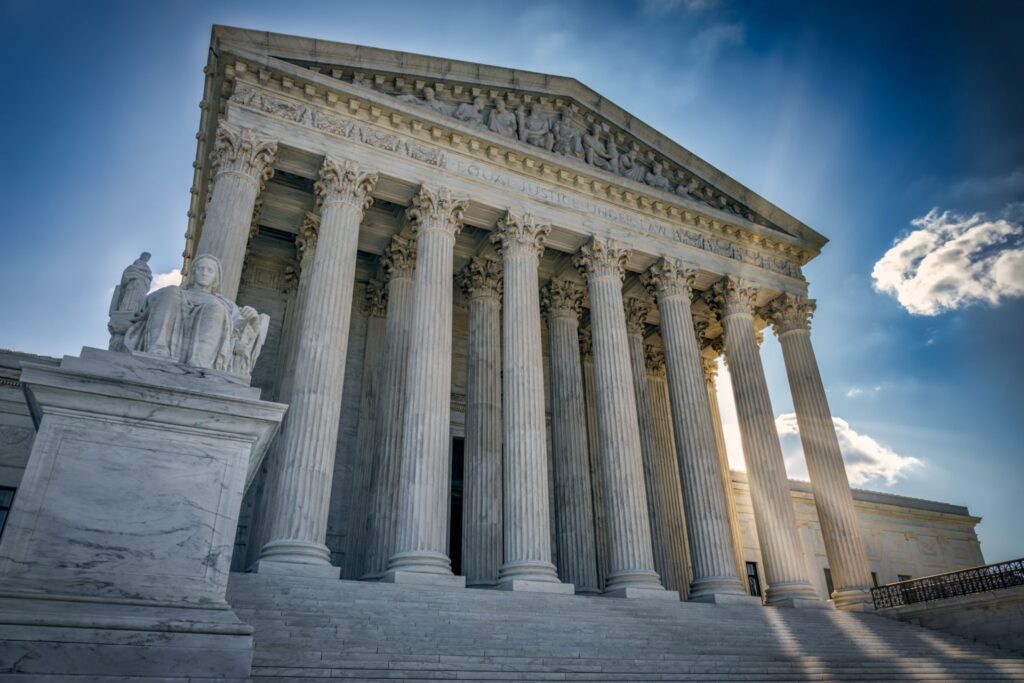While the Fourth Amendment prohibits searches or seizures that are “unreasonable,” first, there has to be a search or seizure. Unfortunately, when it comes to seizures, this is not always clear. Granted, there are a few hard and set rules, like:
- It’s a seizure when police use deadly force,
- It’s a seizure if you’ve been brought to the police station against your wishes,
- It’s a seizure if you’ve been stopped by a police roadblock or sobriety checkpoint,
- You and everyone else in the car has been seized during a traffic stop [**LINK**], and
- It’s not a seizure if police ask you a question in public.
However, in between these extremes, the law is a mess, as exemplified by the Supreme Court of the United States’ difficulty in articulating a rule that’s remotely useful [**LINK**]. The seminal case from 1968, Terry v. Ohio, which was the first time the Supreme Court dealt with a “stop and frisk,” highlights the difficulties inherent in pointing to the exact moment in time that someone gets “seized,” and then backing that decision up with a rational explanation.
Terry v. Ohio
In Terry, a detective saw two men who, from his three decades of working that particular area of Cleveland, “didn’t look right.” One would walk past a storefront, look in, and walk back to his companion at the street corner, where a third would later join them. This happened a few times before the detective, thinking that they were “casing” the store and might be armed, approached, identified himself as a police officer, and asked for their names.
When they “mumbled something,” the detective grabbed one of them, spun him around, and patted down the outside of his clothing. Feeling a gun, the detective removed the man’s coat, removed a revolver, and told everyone to face the wall with their hands raised while he patted down the others.
Two were arrested and charged with carrying concealed weapons.
Precise Point of Seizure Never Discussed
Tackling the issue of whether the detective had violated the men’s Fourth Amendment rights, the Supreme Court in Terry dealt with the first of the two questions that need to be asked in every seizure case:
- Was there a seizure, at all?
- If yes, was that seizure reasonable?
The Court started by going over the confusing spectrum of police detentions, noting that “seizures” were different from not only “arrests,” but also from “stops” and “detentions,” as well. However, after examining these issues, the Supreme Court made two mistakes.
First, Court stated that differently worded detentions merely “served to divert attention from the central inquiry under the Fourth Amendment,” but that the central inquiry was “the reasonableness in all the circumstances of the particular governmental invasion of a citizen’s personal security.” At that point, though, the Court had not yet progressed to the question of whether the seizure was “reasonable” – it was still dealing with whether there was a seizure, in the first place. Instead of delving into the nuances of the first question of seizure cases, the Court in Terry stirred confusion into the mix by referring to the second question, making it seem that “reasonableness” also has a part to play in determining whether there was a seizure, at all.
But then the Court made its second mistake, saying that the suspect was “clearly” seized and searched when the detective “took hold of him and patted down the outer surfaces of his clothing.” Unfortunately, this leaves open as many questions as it answers, including:
- Was it the “taking hold” of the suspect that was the seizure, or did the “pat down” contribute?
- What about the other suspects? Were they also seized when the first was “taken hold of”?
- What, exactly, makes this such a “clear” decision?
Criminal Defense Attorney William T. Bly
The difficulties in determining the exact moment of a seizure is notoriously complex. Unfortunately, it can make a huge difference, as illegal seizures trigger the exclusionary rule, preventing any evidence obtained from being used against you in court.
Maine criminal defense attorney William T. Bly knows this and uses it as he advocates for his clients’ rights and interests. Contact him online or call his law office at (207) 571-8146.


